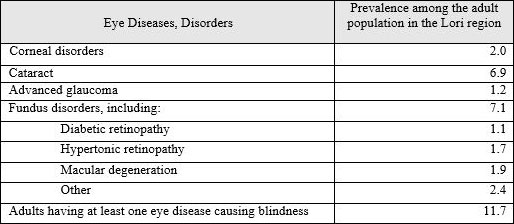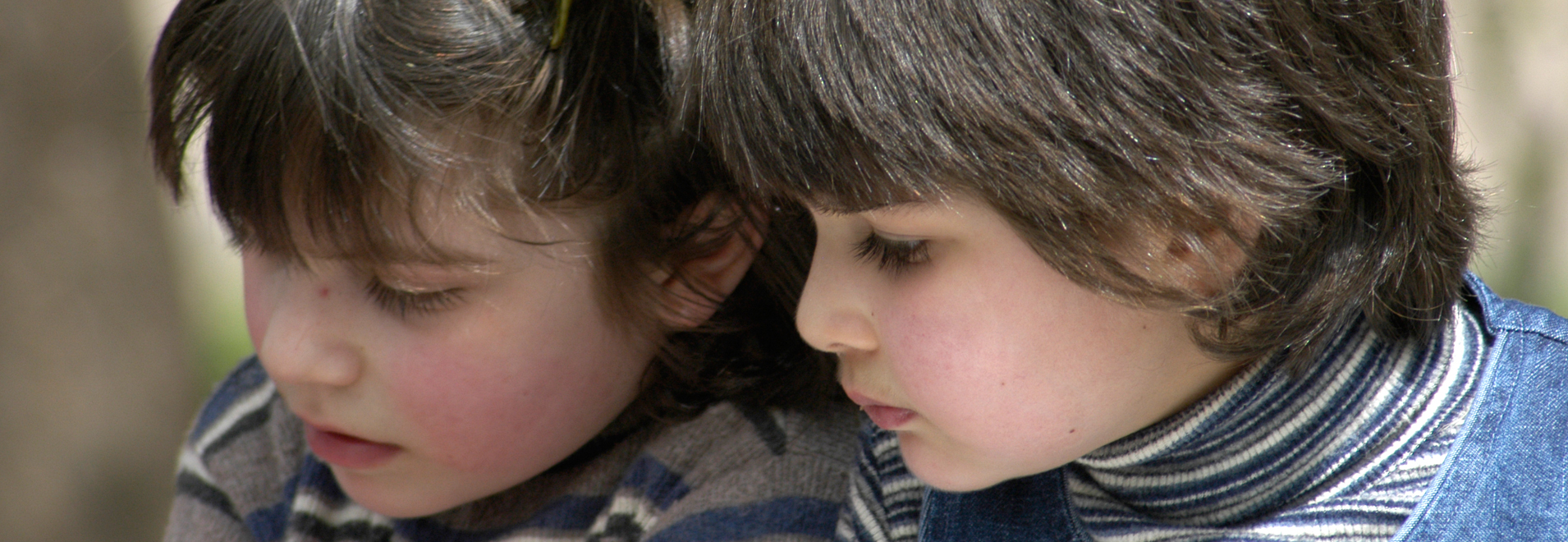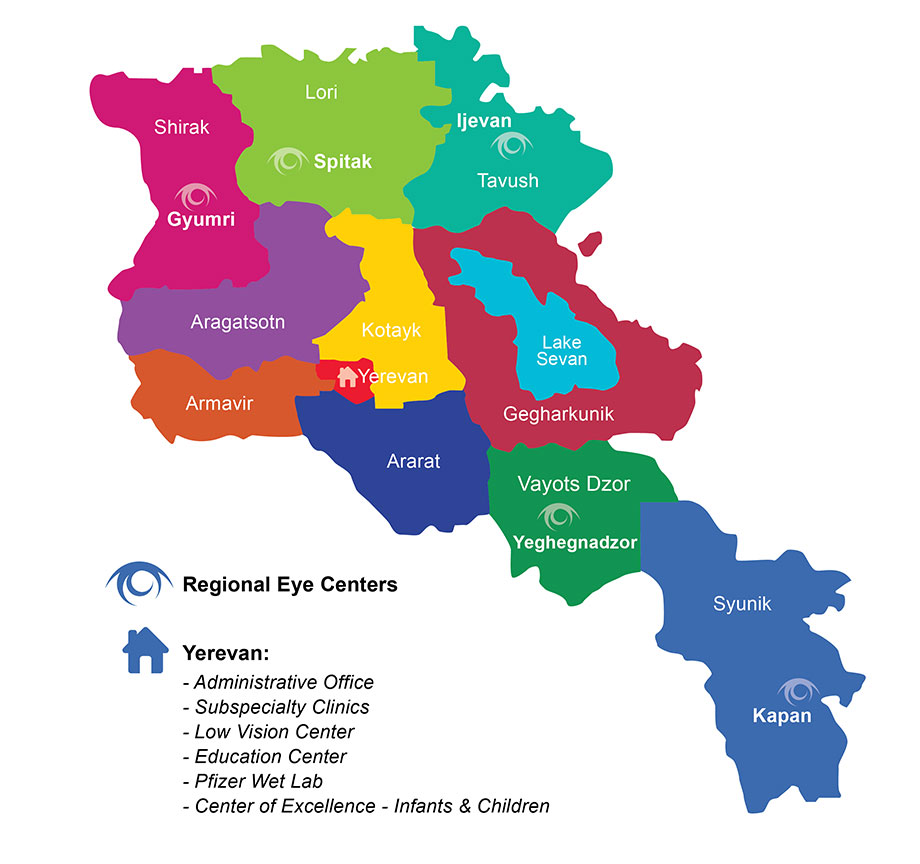Capital:
City of Vanadzor
Provinces:
Spitak, Stepanavan, Tashir, Tumanyan, Gugark
Cities:
Vanadzor, Spitak, Stepanavan, Alaverdi, Tumanyan, Shamlugh
The Lori Marz is located in northern Armenia and covers 3,798 square kilometers or 1,463 square miles. Georgia borders the Marz on the north along with four Armenian marzes —Tavush on the east, Kotayk on the southeast, Aragatsotn on the southwest and Shirak on the west. The capitol of Lori is Vandazor and it is the third largest marz in Armenia geographically, occupying 12.7 percent of Armenia’s land, with eight percent of the country’s population. It has five administrative provinces — Gugark, Spitak, Stepanavan, Tashir and Tumanyan. The population of Lori is 237,700 with 58.5 percent of the population living in eight urban areas and 41.5 percent living in 105 rural communities and 122 rural settlements. The population is very homogeneous — 97 percent Armenian, 1.5 percent Russian, 1 percent Greek and .5 percent Yezides, Kurds and Asorians.
Lori is a beautiful Marz covered with rocky hillsides, sheer gorges and forests and it is home to the UNESCO World Heritage Sites of Haghpat and Sanahin and the Akhtala Monastery where Armenians, Georgians and Greeks make an annual pilgrimage. The land is rich with diverse flora and fauna and there are many historic monuments. The leading industries are mine production — natural minerals and resources are plentiful with molybdenium and copper. Lori was severely affected by the 1988 Spitak earthquake and is still recovering more than 25 years later.
Social Welfare
Lori is home to 50,618 pensioners, 17,061 disabled citizens, 2,666 orphans and 7,773 refugee families. Ten percernt of Lori’s families, or 23,461, are registered with the family benefit system as poor, yet only 21 percent or 4,827 of those received a family benefit allowance.
Education
Lori has 152 educational institutions wiht 25,771 students with 2,852 first graders in 2012. There are 3,616 teachers in the region and the teacher to student ratio is 1 to 7.2. Lori has 85 community libraries, 4 theatres, 11 museums and many cultural centers.
Health Sector
Lori has 36 medical institutions, which include one hospital, five medical centers, three health centers, five polyclinics and 20 primary health care centers. Working at these medical institutions are 426 doctors and 970 ancillary medical personnel.
In 2012, there were 17,651 general medicine inpatient hospital visits. Of those visits 21 percent or 3,687 patients were fee for service; 79 percent or 13,964 patients were state supported. In addition, 282,206 patients made 705,514 outpatient visits at an average of 2.5 visits per person.
Just 13 percent of Lori’s residents, or 30,000 people, visit an ophthalmologist for basic eye care and eyeglass prescriptions. There are nine ophthalmologists throughout Lori in state health care facilities who provide basic eye care services, however, no ophthalmology departments in the medical centers provide care for more serious eye disease or perform surgery. For serious eye disease, surgery or laser procedures residents travel to Yerevan if they can afford the physician fees and travel costs. The Marz has two private eye centers with ophthalmologists who perform cataract surgeries and they see approximately 800 patients a year. There is also a branch of the Howard Karageozyan Foundation, which provides charitable eye care and dental services for children.
According to the leadership of the Marz, the needs of the residents for basic eye care are minimally covered. However, there is no surgery or care for serious eye diseases and disorders. Few visit the private centers and people prefer to wait for the AECP’s bi-annual visits when they can have basic eye care and eyeglass prescriptions at no cost. The vulnerable also receive surgery at no cost on the MEH — the AECP is not permitted to provide surgery for anyone above the poverty line.
Following are the number of patients seen and the procedures performed on the MEH in Lori, 2005 through 2013.
During the AECP’s last mission to the Lori Marz in 2013, of those screened nearly 3.5 percent were diagnosed with advanced glaucoma, 20.3 percent with cataract, 1.5 percent with corneal disorders and 16.8 percent with fundus disorders. Using this data and the demographics of Lori, the AECP estimated the prevalence of primary eye diseases among the adult population (16 and over) in the Marz.

The government of Lori tells us that the best location for an eye center will be in the city of Spitak, due to the devastating earthquake that took place there in 1988 — and the subsequent disarray afterward. The Armenian government will donate a space and build it out according to the specifications for an eye center— reception area, examination rooms, outpatient surgery and eyeglass area. The EyeCare Project will provide all of the necessary equipment.
It is essential that the center have a permanent and highly qualified and trained staff, which will include a surgical ophthalmologist, ophthalmological nurses and ancillary personnel. If local ophthalmologists and/or surgical nurses are considered for a position they will be screened through extensive interviews and testing to ensure they have the qualifications and experience to serve as the primary surgical ophthalmologist and director of the centeer. If they assume a local position the AECP will provide training along with mentors — a chief surgeon and a surgical nurse who will assist in surgeries and help the local staff gain the skills, confidence and the trust of Lori residents.
Operations
After ten years of providing eye care services at no charge to the patient, the AECP is considering the possibility of introducing a fee-for-service component to its charitable program. As a nonprofit organization, the AECP will continue to pursue its mission to eliminate preventable blindness and to provide access to quality eye care for all Armenians. Going forward, in addition to providing surgery and other advanced care to the vulnerable population at no charge, the AECP will provide services for all income groups for a fee. This will enable the Project to continue its programs for the poor at no charge and ensure the sustainability of the Regional Center and the AECP program.
For budgeting purposes the AECP will estimate patient load and income based on the number of surgeries the AECP Mobile Eye Hospital performs — average of 354 surgeries and 118 lasers per visit in Lori. However, it is assumed that this number will be significantly higher since the MEH is in Lori only once every two years. Fees for services will be comparable to those charged in Yerevan and Gyumri. The Project estimates:
- 6,000 persons, including children, seen by a physician
- 0,350 persons eligible for surgery at no cost, half of cases reimbursed by the state
- 0,100 persons needing laser procedures
- 0,180 persons who will pay for eye care services







